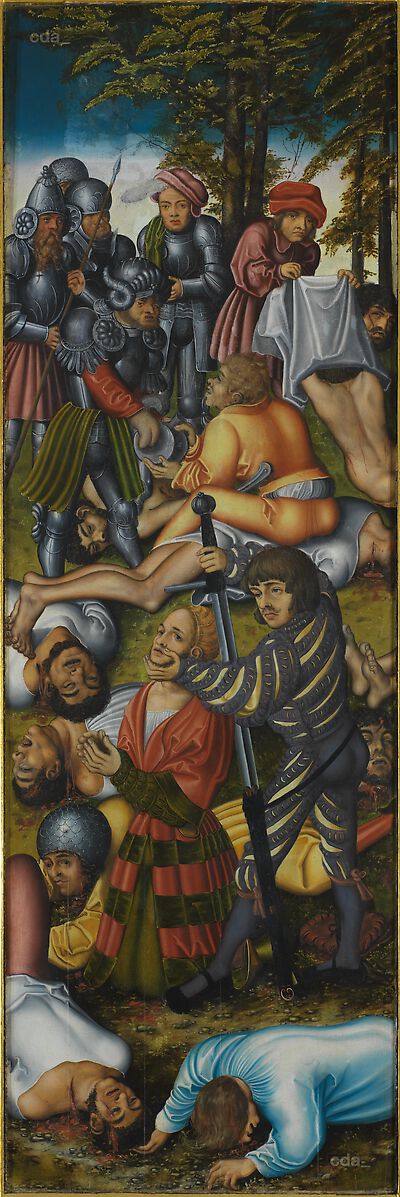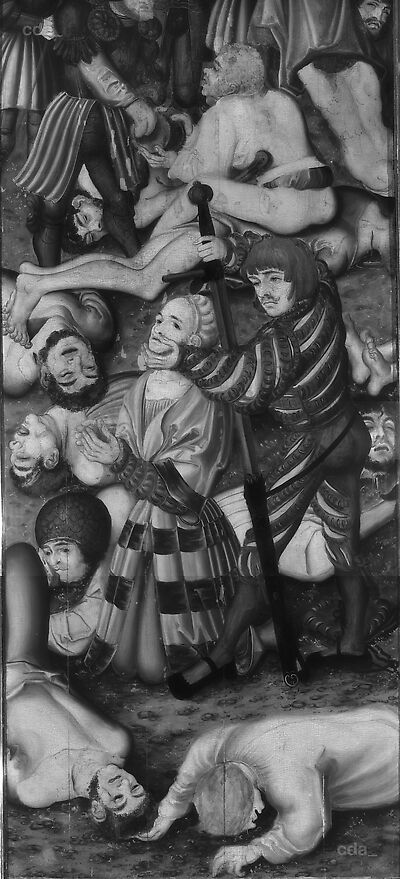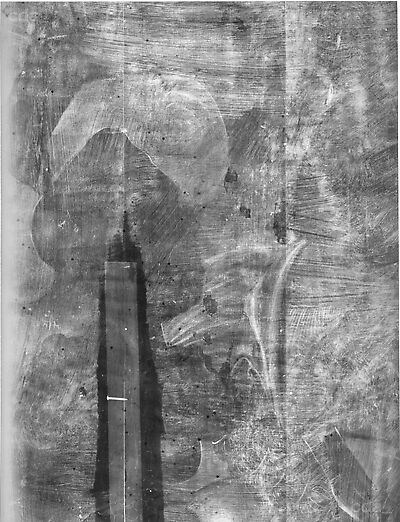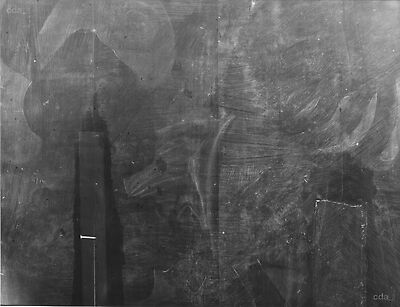The somewhat martial depiction of the mass murder refers to the Legend of the pagan Prince Achatius. Faced with pending defeat he converted with his army to Christianity and remained faithful after his amazing victory. Interesting here is the chosen narrative strategy that singles out the three central events and
The somewhat martial depiction of the mass murder refers to the Legend of the pagan Prince Achatius. Faced with pending defeat he converted with his army to Christianity and remained faithful after his amazing victory. Interesting here is the chosen narrative strategy that singles out the three central events and strings the scenes together by arranging them above each other. While Roman soldiers dressed in imaginary armour busily undress the doomed people at the edge of a wood, the dramatic climax of the terrible event unfolds beneath: the execution of St Achatius who is identified by the precious garments and the golden wire bonnet worn by the protagonist. The executioner holds him by the chin and pulls his sword from his sheath. At the bottom edge of the painting two executed figures lie on the stony ground, one delivered with a detached expression on his face and the other clawing the hard earth in his fight with death. The tangle of death corpses and the slaughtering soldiers fill almost the entire pictorial surface and create a figurative tapestry of gruesome decorative effect.
[Böhlitz 2005, 23]




